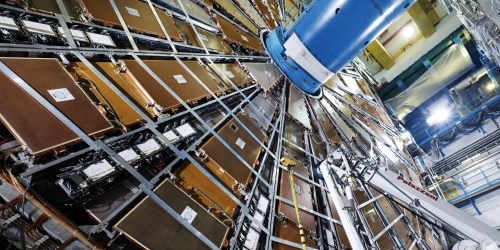LHC Data Constrain Multiple Higgs Models
Physicists have learned a lot about the Higgs boson since its discovery in 2012, but there remain mysteries. One question is whether the Higgs that was detected is alone or whether it is part of a family of Higgses (Feature: The Era of Higgs Physics). Using data from the Large Hadron Collider in Switzerland, the Atlas Collaboration has looked for a possible signature of multiple Higgs bosons in interactions with W and Z bosons, which carry the weak force [1]. The lack of evidence for this signature helps rule out some multi-Higgs models.
In the standard model of particle physics, both the W and Z bosons obtain their mass through couplings to the field associated with the Higgs boson. Previous studies have determined the absolute value of these couplings, but they have not been able to measure the sign. The standard model assumes that both couplings are positive, but certain “beyond-standard-model” scenarios with multiple Higgs bosons predict that the relative sign between the W and Z couplings is negative.
The Atlas Collaboration searched for evidence of this negative relative sign in selected collision events that produce both a Higgs boson and a W boson. There are several different ways to produce this particle pair, and of these ways, two are similar enough that they can interfere with each other quantum mechanically. How this interference occurs depends on the relative sign of the W and Z couplings. If the sign were negative, then the interference would be constructive—which would boost the number of events producing Higgs and W. The data did not show this boost, so the team could place tight constraints on models having more than two Higgs bosons.
–Michael Schirber
Michael Schirber is a Corresponding Editor for Physics Magazine based in Lyon, France.
References
- G. Aad et al. (ATLAS Collaboration), “Determination of the relative sign of the Higgs boson couplings to W and Z bosons using WH production via vector-boson fusion with the ATLAS detector,” Phys. Rev. Lett. 133, 141801 (2024).




